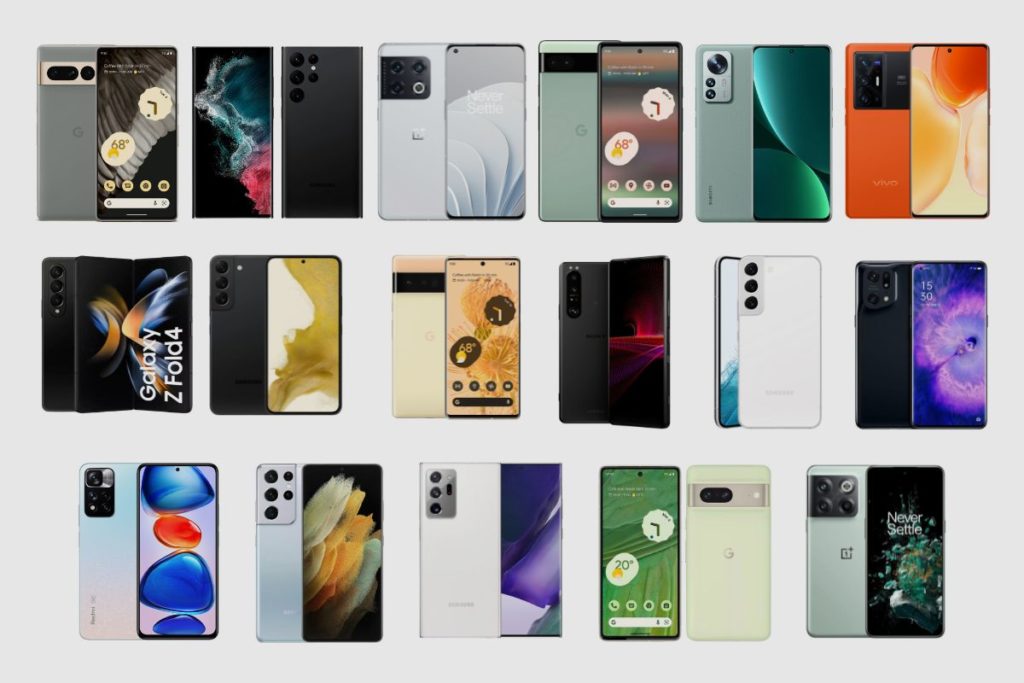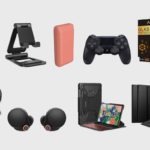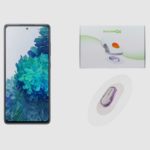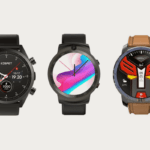When it comes to selecting a smartphone, everyone has different priorities and preferences. However, one feature that is often high on the list for many users is the camera quality.
After all, smartphones have become our go-to device for capturing memories, and we want those memories to be captured in the best possible way. Whether you’re a professional photographer or simply love taking photos as a hobby, having a smartphone with a good camera is essential.
In this article, I’ll be discussing 17 Android phones that are known for their exceptional and best camera capabilities. If you’re someone who loves taking photos and videos with good quality, then any of these phones listed below are definitely worth considering.
Let’s get into it. The first smartphone on the list is the Google Pixel 7 Pro.
- 1. Google Pixel 7 Pro
- 2. Samsung Galaxy S22 Ultra
- 3. OnePlus 10 Pro
- 4. Google Pixel 6a
- 5. Vivo X70 Pro+
- 6. Xiaomi 12 Pro
- 7. Sony Xperia 1 III
- 8. Samsung Galaxy S22+
- 9. Google Pixels 6 Pro
- 10. Samsung Galaxy Z Fold 4
- 11. Samsung Galaxy S22
- 12. Oppo Find X5 Pro
- 13. Xiaomi Redmi Note 11 Pro 5G
- 14. Samsung Galaxy S21 Ultra
- 15. Samsung Galaxy Note 20 Ultra
- 16. Google Pixel 7
- 17. OnePlus 10T
- Conclusion
- Image Gallery – Discover The Top 17 Android Phones With The Best Camera.
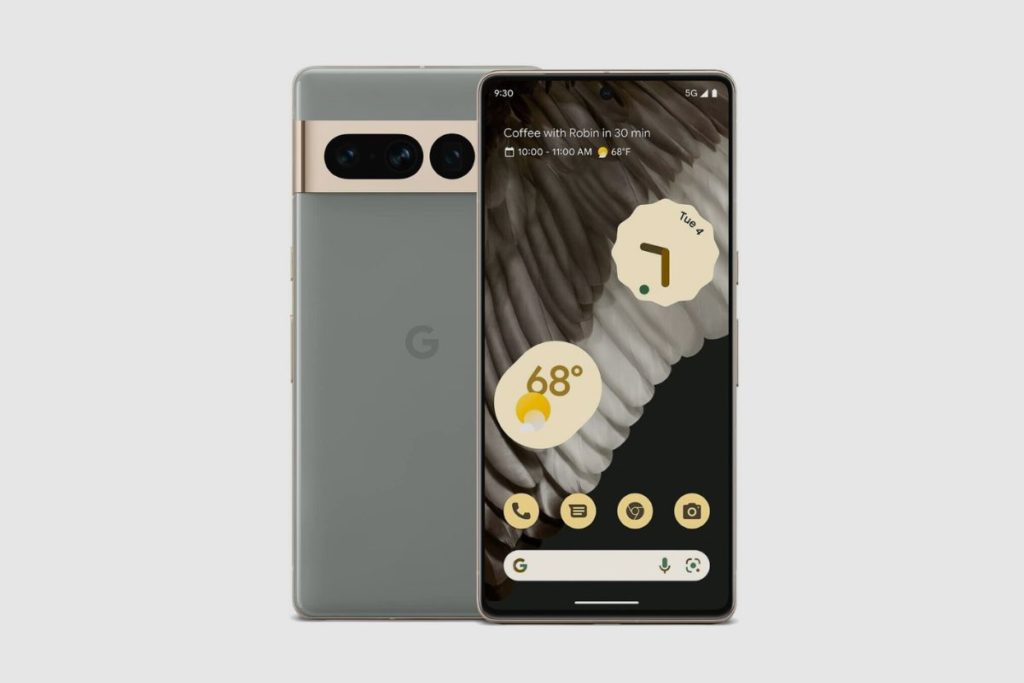
1. Google Pixel 7 Pro
Launched in October 2022, the Google Pixel 7 Pro boasts of the new Android 13, a Google Tensor G2 (5 nm) chipset, and a Mali-G710 MP7 GPU. It also comes with a 120Hz refresh rate, a 6.7″ LTPO AMOLED display, display brightness ranging from 1000 nits (min) – 1500 nits (max), a solid 1440 x 3120 PX screen resolution, and 512 PPI.
Camera Specs
The Google Pixel 7 Pro has a triple camera layout at the rear.
- 50MP wide (f/1.9, 25 mm, 1/2.55″, multidirectional PDAF) camera
- 48MP telephoto (f/3.5, 120 mm, 1/2.9″, multidirectional PDAF, optical zoom) camera
- 12MP ultrawide (f/2.2, 126°, AF) camera.
- Features: Dual-LED flash, pixel shift, Auto-HDR, and panorama.
- Video quality (main camera): 4K@30/60fps, 1080@30/60/120/240fps
- Selfie Camera: 10.8MP ultrawide (f/2.2, 21 mm, 1/3.1″) camera, which features Auto-HDR and panorama.
- Video quality (selfie camera): 4k@30/60fps, 1080p@30/60fps.
Pros
- Flatter sides
- Powerful software tools
- 120Hz refresh rate for the display
- Clean software experience
- 2x and 10x camera crop modes.
Cons
- Issues with phone calls
- Shorter battery life than the Pixel 7
- Limited HDR sharing.

2. Samsung Galaxy S22 Ultra
Samsung Galaxy S22 Ultra was launched with Android 12 (upgradable to version 13) and had a 6.8″ Dynamic AMOLED 2x display, a Qualcomm SM8450 Snapdragon 8 Gen 1 (4 nm), Adreno 730 GPU, and a 120Hz refresh rate for smooth use. It also comes with a 1440 x 3088px screen resolution and a non-removable Li-Po 5000mAh.
Camera Specs
The Samsung Galaxy S22 Ultra has a quad-camera setup.
- 108MP wide (f/1.8, 23 mm, 1/1.33″, PDAF) camera
- 10MP periscope telephoto (f/4.9, 230 mm, 1/3.52″, dual pixel PDAF) camera
- 10MP telephoto (f/2.4, 70 mm, 1/3.52″ dual pixel PDAF) camera
- 12MP ultrawide (f/2.2, 13 mm, 120°, 1/2.55″ dual pixel PDAF) camera
- Features: LED flash, auto-HDR, panorama
- Video quality (main camera): 8k@24fps, 4k@30/60fps, 1080p@30/60fps, 720p@960fps
- Selfie Camera: 40MP wide (f/2.2, 26 mm, 1/2.82″ PDAF) camera, which features dual video call and auto-HDR.
- Video quality (selfie camera): 4k@30/60fps, 1080p@30fps.
Pros
- Fantastic low-light photography
- Faster processor
- Improved camera design
- Effective S Pen support.
Cons
- Quite expensive
- Less RAM than S21 Ultra
- No microSD card slot.

3. OnePlus 10 Pro
The OnePlus 10 Pro smartphone was launched in January 2022, weighs 201g, and comes with an Android 12 (upgradable to 13). It runs on a Qualcomm SM8450 Snapdragon 8 Gen 1 (4 nm) chipset, an Adreno 730 GPU, and a 6.7″ LTPO2 Fluid AMOLED display. It also comes with a refresh rate of 120Hz, 1440 x 3216px screen resolution, and 525 PPI.
Camera Specs
The OnePlus 10 Pro comes with a triple camera setup.
- 48MP wide (f/1.8, 23 mm, 1/1.43″ multidirectional PDAF) camera
- 8MP telephoto (f/2.4, 77 mm, PDAF) camera
- 50MP ultrawide (f/2.2, 14 mm, 150°, 1/2.76″) camera
- Features: Hasselblad colour calibration, Dual-LED dual -flash, HDR, and panorama.
- Video quality (main camera): 8k@24fps, 4k@30/60/120fps, 1080p@30/60/240fps
- Selfie camera: 32MP wide (f/2.2, 1/2.74″) camera which features an Auto-HDR
- Video quality (selfie camera): 1080p@30fps.
Pros
- Sleek AMOLED 120Hz screen
- Fast fingerprint and face unlock
- Impressive fast charging
- Offers the latest hardware
- Sleek build.
Cons
- Telephoto camera is average
- No IP certification
- No 5G on AT&T.
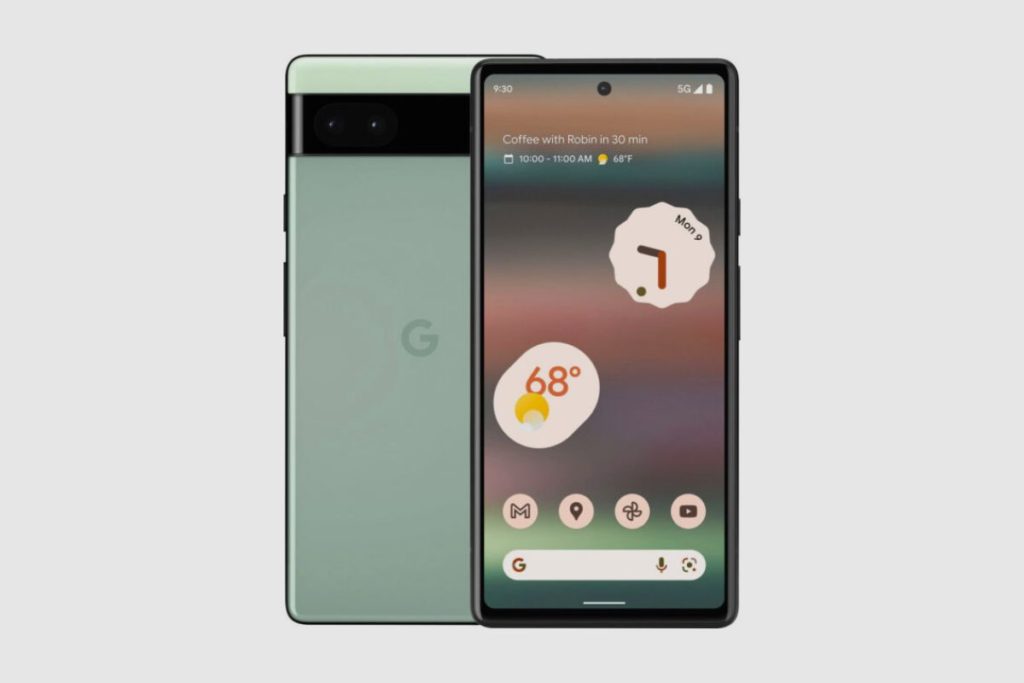
4. Google Pixel 6a
Built with an Android 12 OS (upgradable), a Google Tensor (5 nm) chipset, and a Mali-G78 MP20 GPU, the Google Pixel 6a was launched in May 2022 and boasted a 1080 x 2400px screen resolution. It also comes with a 6.1″ OLED HDR display, a 20:9 aspect ratio, and a 429 PPI.
Camera Specs
- The Google Pixel 6a comes with a dual camera setup.
- 12.2MP wide (f/1.7, 27 mm, dual pixel PDAF) camera
- 12MP ultrawide (f/2.2, 17 mm, 114°) camera.
- Features: Dual-LED flash, Pixel Shift, Auto-HDR, ad panorama
- Video quality (main camera): 4k@30/60fps, 1080p@30/60/120/240fps
- Selfie Camera: Single 8MP wide (f/2.0, 24 mm) camera which features an Auto-HDR and panorama.
- Video quality (selfie camera): 1080p@30fps.
Pros
- IP67 water resistance
- Long-lasting battery
- Excellent cameras
- Beautiful design
- Sharp OLED display
- Feature-packed OS
- Considerably lightweight.
Cons
- No microSD card slot
- No headphone jack
- No wireless charging.

5. Vivo X70 Pro+
Released in September 2021, the Vivo X70 Pro+ boasts of Android 11 on a Qualcomm SM8350 Snapdragon 888+ 5G (5 nm) chipset and an Adreno 660 GPU. It also comes with a 6.78″ LTPO AMOLED display with a refresh rate of 120Hz, and a 1440 x 3200 px screen resolution.
Camera Specs
Vivo X70 Pro+ has a Quad camera set-up.
- 50MP wide (f/1.6, 1/1.31″ PDAF) camera
- 8MP periscope telephoto (f/3.4, 125 mm, 1/4.4″ PDAF) camera
- 12MP telephoto (f/1.6, 50 mm, 1/2.93″ PDAF) camera
- 48MP ultrawide (f/2.2, 14 mm, 114°, 1/2.0″) camera
- Features: Zeiss optics, Zeiss T lens coating, Pixel Shift Dual-LED dual-tone flash, HDR, and panorama
- Video quality (main camera): 8k@30fps, 4k@30/60fps, 1080p@30/60fps
- Selfie Camera: Single 32MP wide (f/2.5, 24 mm, 1.28″) which features an HDR.
- Video quality (selfie camera): 4k@30fps, 1080p@30fps.
Pros
- 1500 nits peak brightness
- 5x and 2x optical zoom camera
- Fast wired and wireless charging
- Custom UI support
- Water and dust resistance.
Cons
- No secondary storage support
- No corning glass protection
- No stereo speakers.
6. Xiaomi 12 Pro
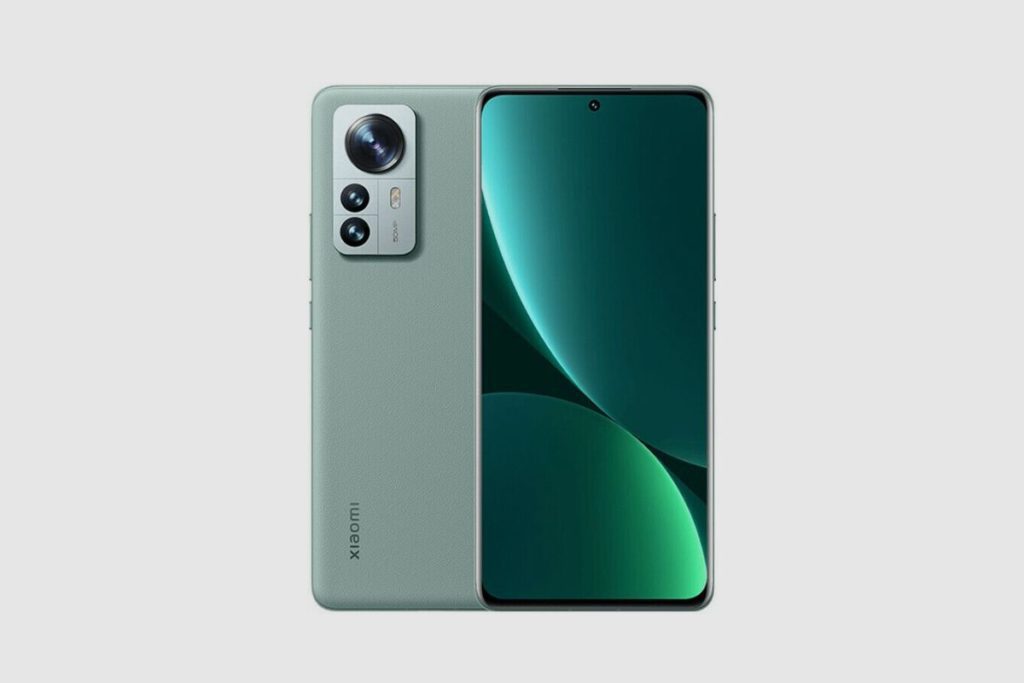
Xiaomi 12 Pro comes with an Android 12 OS on a Qualcomm SM8450 Snapdragon 8 Gen 1 (4 nm) chipset, Adreno 730 GPU, and a 6.73″ LPTO AMOLED display which supports a 120Hz refresh rate. It also comes with a 1440 x 3200 px screen resolution, 1500 nits peak brightness, and 521 PPI.
Camera Specs
The Xiaomi 12 Pro comes with a Triple camera set-up.
- 50MP wide (f/1.9, 24 mm, 1/1.28″ dual pixel PDAF) camera
- 50MP telephoto (f/1.9, 48 mm, PDAF) camera
- 50MP ultrawide (f/2.2, 115°) camera
- Features: Dual-LED dual-tone flash, HDR, and panorama
- Video quality (main camera): 8k@24fps, 4k@30/60fps, 1080p@30/60/120/240/960fps, 720p@1920fps
- Selfie Camera: Single 32MP wide (f/2.5, 26 mm) camera which features an HDR and Panorama
- Video quality (selfie camera): 1080p@30/60fps, 720@120fps.
Pros
- 5G and NFC enabled
- Improved camera performance
- Excellent battery life
- All-time 120W fast charging rate
- OS is upgradable to Android 13.
Cons
- Supports only 2x optical zoom
- No support for microSD cards.

7. Sony Xperia 1 III
Released in August 2021, Sony Xperia 1 III comes with a 6.5″ OLED display with Android 11 (upgradable) and runs on a Qualcomm SM8350 Snapdragon 888 5G (5 nm) chipset and an Adreno 660 GPU. It boasts a 1644 x 3840 px screen resolution and 643 PPI for a smooth display.
Camera Specs
The Sony Xperia 1 III comes with a Triple camera set-up.
- 12MP wide (f/1.7, 24 mm, 1/1.7″ dual pixel PDAF) camera
- 12MP telephoto (f/2.8, 105 mm, 1/2.9″, dual pixel PDAF) camera
- 12MP ultrawide (f/2.2, 124°, 16 mm, 1/2.6″) dual pixel PDAF) camera
- Features: Zeiss optics, Zeiss T lens coating, LED flash, panorama, HDR, and eye tracking
- Video quality (main camera): 4k@24/25/30/60/120fps, 1080p@30/60/120fps
- Selfie Camera: Single 8MP wide (f/2.0, 24 mm, 1/4″) camera
- Video quality (selfie camera): 1080p@30fps.
Pros
- Fast hardware and a nice screen
- Good and versatile
- Neat design.
Cons
- Not the best battery life
- Quite expensive
- The updated policy isn’t great.
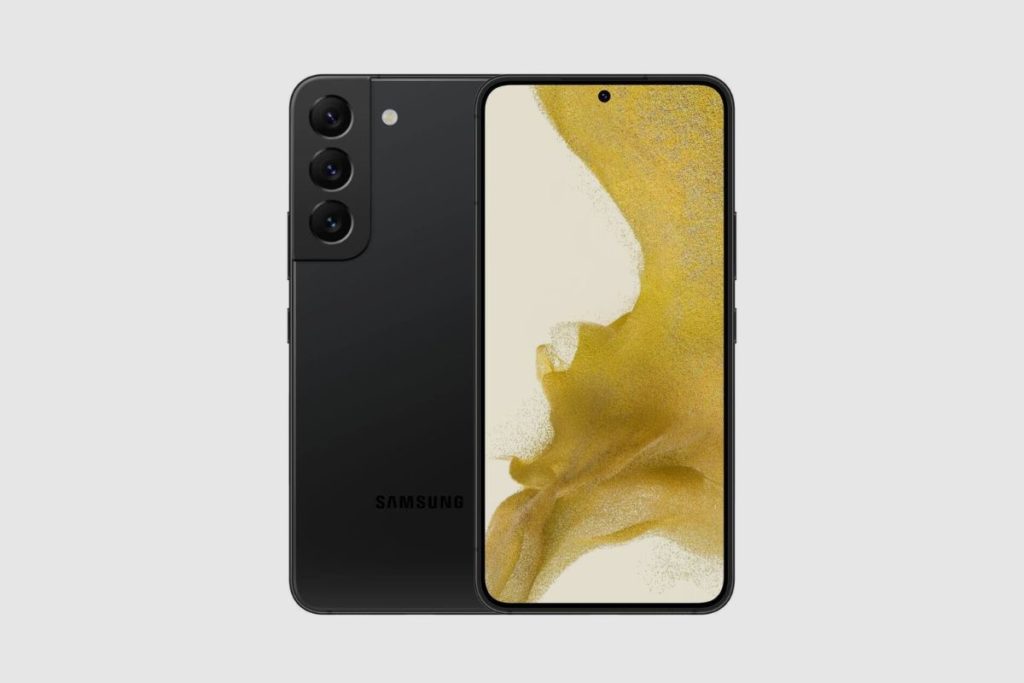
8. Samsung Galaxy S22+
The display of this phone depicts a 6.6″ Dynamic AMOLED 2x display, 120Hz refresh rate, and a 1750 nits peak brightness. It comes with a 1080 x 2340 PX screen resolution, 393 PPI, and Android 12 (upgradable), which runs on a Qualcomm SM8450 Snapdragon 8 Gen 1 (4 nm) chipset and an Adreno 730 GPU. It was launched in February 2022.
Camera Specs
The Samsung Galaxy S22+ comes with a Triple main camera setup.
- 50MP wide (f/1.8, 23 mm, 1/1.56″ dual pixel PDAF) camera
- 10MP telephoto (f/2.4, 70 mm, 1/3.94″ PDAF) camera
- 12MP ultrawide (f/2.2, 13 mm, 120°, 1/2.55″) camera
- Features: LED flash, Auto-HDR, and panorama
- Video quality (main camera): 8k@24fps, 4k@30/60fps, 1080p@30/60/240fps, 720@960fps
- Selfie Camera: Single 10MP wide (f/2.2, 26 mm, 1/3.24″ dual pixel PDAF) camera with features dual video call and Auto-HDR
- Video (selfie camera): 4k@30/60fps, 1080p@30fps.
Pros
- Cutting-edge CPU
- Fast 45W charging
- Sharp display.
Cons
- No external memory for microSD
- No 3.5 mm audio jack.
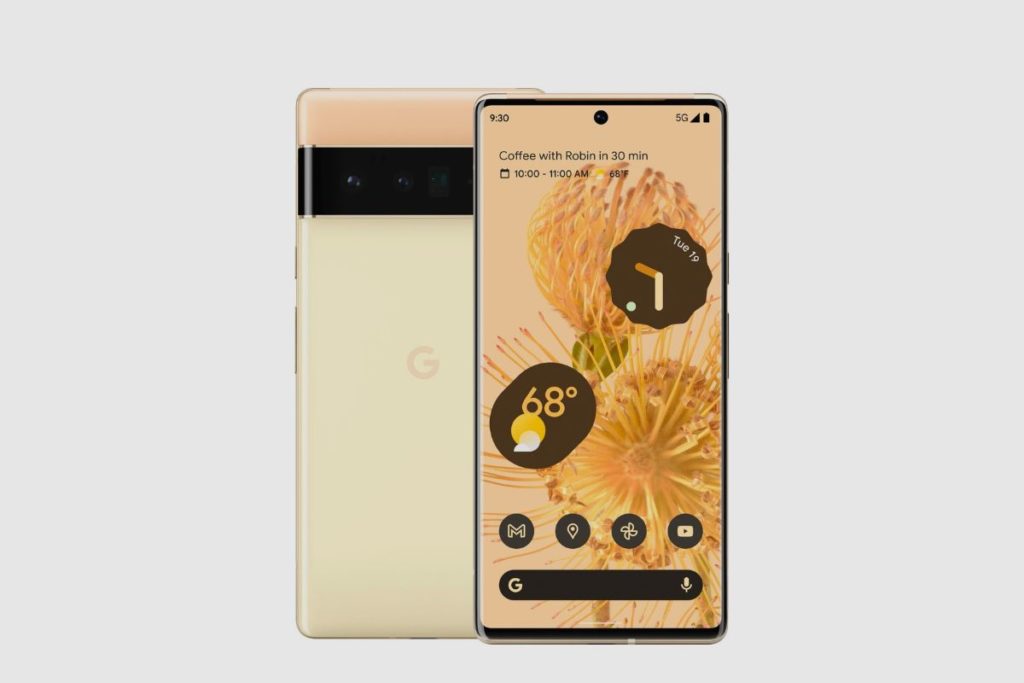
9. Google Pixels 6 Pro
The Google Pixel 6 Pro was launched in October 2021. Its design and build comprise a lightweight 210g (7.41oz), a 6.7″ LTPO AMOLED display, a 120Hz refresh rate, a 19.5:9 aspect ratio, 512 PPI, and a 1440 x 3120 px screen resolution. It operates on Android 12 (upgradable to 13), which runs on a Google Tensor (5 nm) chipset and a Mali-G78 MP20 GPU.
Camera Specs
The Google Pixel 6 Pro comes with a triple camera setup.
- 50MP wide (f/19, 25 mm, 1/1.31″ dual pixel PDAF) camera
- 48MP telephoto (f/3.5, 104 mm, 1/2″ PDAF) camera
- 12MP ultrawide (f/2.2, 17 mm, 114°) camera
- Features: Dual-LED flash, Pixel Shift, Auto-HDR, and panorama
- Video quality (main camera): 4k@30/60fps, 1080p@30/60/120/240fps
- Selfie Camera: Single 11.1MP ultrawide (f/2.2, 20 mm) which features Auto-HDR and panorama.
- Video quality (selfie camera): 4k@30fps, 1080p@30/60fps.
Pros
- Dust and water-resistant
- It runs on Android 12 OS
- Wireless charging and reverse charging
- Quite decent performance of the 5 nm Google Tensor chipset
- Uses USB 3.0.
Cons
- Lacks UI support
- 8k video recording not supported
- MicroSD card is not supported.
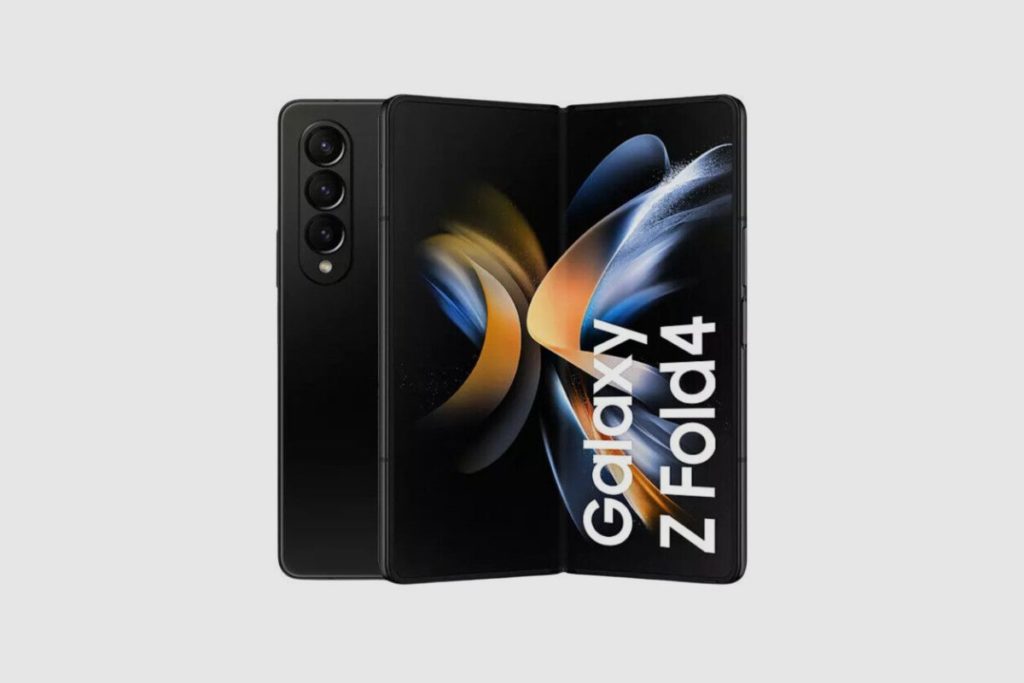
10. Samsung Galaxy Z Fold 4
Being the first of its kind, the Samsung Galaxy Z Fold 4 was launched in August 2022 and came with a 7.6″ Foldable Dynamic AMOLED 2x, a refresh rate of 120Hz, 1200 nits peak brightness, a 373 PPI, and a screen resolution of 1812 x 2176px. It also operates with Android 12 (upgradable to 13), which runs on a Qualcomm SM8475 Snapdragon 8+ Gen 1 (4 nm) and an Adreno 730 GPU.
Camera Specs
The Samsung Galaxy Z Fold 4 is built with a triple camera set-up.
- 50MP wide (f/1.8, 23mm, dual pixel PDAF) camera
- 10MP telephoto (f/2.4, 66mm, PDAF) camera
- 12MP ultrawide (f/2.2, 12mm, 123°) camera
- Features: LED flash, HDR, and panorama.
- Video quality (main camera): 8k@24fps, 4k@60fps, 107
- 80p@60/240fps, 720p@960fps
- Selfie Camera: Single 4MP wide (f/1.8, 26mm) camera, and a 10MP wide (f/2.2, 24mm) which features HDR
- Video quality (selfie camera): 4k@30/60fps, 1080p@30/60fps.
Pros
- Decent design & IPX8 waterproof
- Excellent displays
- Useful multitasking features
- Clean performance.
Cons
- No silo for S Pen
- Quite expensive
- Heavy and bulky
- 25W fast charging rate.

11. Samsung Galaxy S22
The Samsung Galaxy S22 comes with an Android 12 (upgradable to 13), which runs on a Qualcomm SM8450 Snapdragon 8 Gen 1 (4nm) and Adreno 730. Its display comprises a 6.1″ Dynamic AMOLED 2x display, 120Hz refresh rate, 1300 nits peak brightness, 425 PPI, a 19.5:9 aspect ratio, and a screen resolution of 1080 x 2340px. It was launched in February 2022.
Camera Specs
This smartphone comes with a triple camera setup.
- 50MP wide (f/1.8, 23 mm, 1/1.56″, dual pixel PDAF) camera
- 10MP telephoto (f/2.4, 70 mm, 1/3.94″ PDAF) camera
- 12MP ultrawide (f/2.2, 13 mm, 120°, 1/2.55″) camera
- Features: LED flash, Auto-HDR, and panorama.
- Video quality (main camera): 8k@24fps, 4k@30/60fps, 1080p@30/60/240fps, 720@960fps
- Selfie Camera: Single 10MP wide (f/2.2, 26 mm, 1/3.24″, dual pixel PDAF) camera, which features dual video call and Auto-HDR.
- Video quality (selfie camera): 4k@30/60fps, 1080p@30fps.
Pros
- Sharp and colourful display
- Suitable for one-handed use
- Powerful processor (chipset and GPU)
- Produces good daylight shots.
Cons
- The screen is not so wide
- No microSD card slot
- Slow charging and small battery
- Average battery life.

12. Oppo Find X5 Pro
The Oppo Find X5 Pro was launched in March 2022 with an Android 12 OS (upgradable 13), which runs on a Qualcomm SM8450 Snapdragon 8 Gen 1 (4 nm) and comes with a 6.7″ LTPO2 AMOLED, a refresh rate of 120Hz, peak display brightness 1300 nits, a 525 PPI, and a screen resolution of 1440 x
3216px.
Camera Specs
The Oppo Find X5 Pro is built with a triple camera setup.
- 50MP wide (f/1.7, 25 mm, 1/1.56″, multidirectional PDAF) camera
- 13MP telephoto (f/2.4, 52 mm, 1/1.34″, 2x optical zoom, PDAF) camera
- 50MP ultrawide (f/2.2, 15 mm, 110°, 1/1.56″, multidirectional PDAF) camera
- Features: Hasselblad colour calibration, LED flash, HDR, and panorama
- Video quality (main camera): 4k@30/60fps, 1080p@30/60/240fps
- Selfie Camera: Single 32MP wide (f/2.4, 21 mm, 1/2.74″) camera which features panorama.
- Video quality (selfie camera): 1080p@30fps.
Pros
- High-performance processor
- 80W fast charge rate
- Fantastic software
- Superfast wired and wireless charging.
Cons
- Only 2x optical zoom is available
- No microSD card slot
- No audio jack
- Quite expensive.
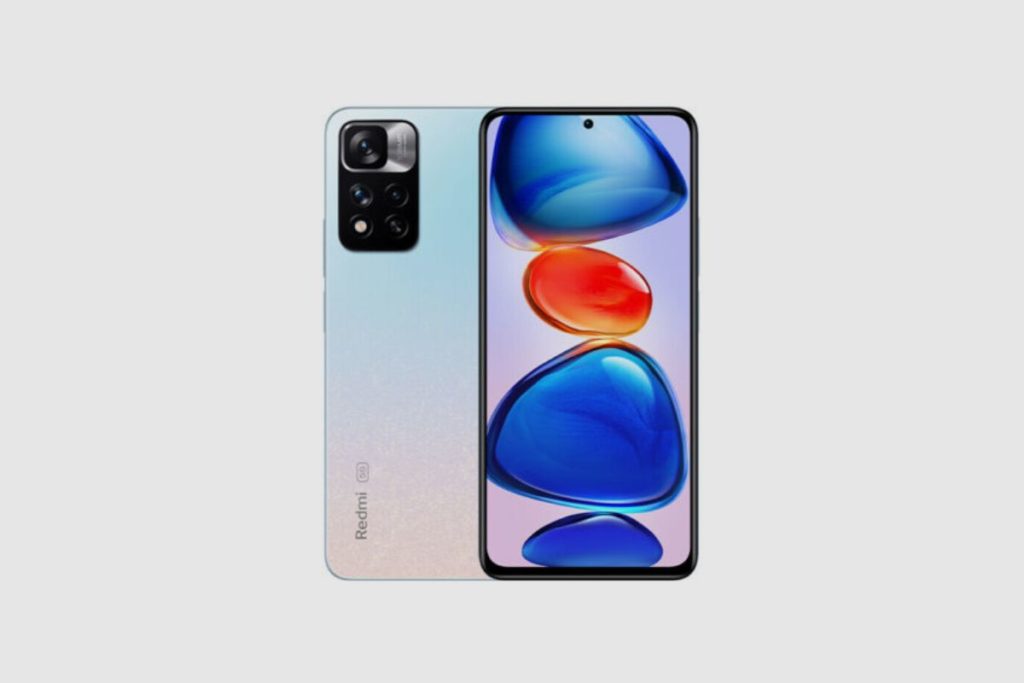
13. Xiaomi Redmi Note 11 Pro 5G
The Xiaomi Redmi Note 11 Pro 5G was launched in February 2022 and is built with a 6.67″ Super AMOLED display, refresh rate of 120Hz, peak brightness of 1200 nits, 395 PPI, and a screen resolution of 1080 x 2400px for a cool viewing experience. It also has an Android 11 OS, which runs on a Qualcomm SM6375 Snapdragon 695 5G (6 nm) chipset and an Adreno 619 GPU.
Camera Specs
This smartphone is built with a triple-camera setup:
- 108MP wide (f/1.9, 26 mm, 1/1.52″, PDAF) camera
- 8MP ultrawide (f/2.2, 118°) camera
- 2MP macro (f/2.4) camera
- Features: LED flash, HDR, and panorama
- Video quality: 1080p@30fps
- Selfie Camera: Single 16MP wide (f/2.5, 1/3.06″) camera
- Video quality (selfie camera): 1080p@30fps.
Pros
- The peak brightness of 1200 nits
- Supports 5V connectivity
- Superfast charge of 67
- Solid build and design.
Cons
- Improvement in night photography
- Doesn’t operate on Android 12
- Quite expensive.

14. Samsung Galaxy S21 Ultra
Samsung Galaxy S21 Ultra was launched in January 2021 and was built with an Android 11 OS (upgradable to 13), which runs on a Qualcomm SM8350 Snapdragon 888 5G (5 nm) and a Mali-G78 MP14 GPU. It comes with display qualities as much as a 6.8″ Dynamic AMOLED 2x display, refresh rate of 120Hz, 1500 nits peak brightness, 1440 x 3200 pixels screen resolution, and a 515 PPI.
Camera Specs
The Galaxy S21 Ultra is built with a quad-camera setup.
- 108MP wide (f/1.8, 24 mm, 1/1.33″, PDAF) camera
- 10MP periscope telephoto (f/4.9, 240 mm, 1/3.24″, dual pixel PDAF) camera
- 10MP telephoto (f/2.4, 72 mm, 1/3.24″, dual pixel PDAF) camera
- 12MP ultrawide (f/2.2, 13 mm, 1/2.55″, dual pixel PDAF) camera
- Features: LED flash, Auto-HDR, and panorama
- Video quality (main camera): 8k@24fps, 4k@30/60fps, 1080p@30/60/240fps, 720p@960fps
- Selfie Camera: Single 40MP wide (f/2.2, 26 mm, 1/2.8″, PDAF) camera which features dual video call, and Auto-HDR
- Video quality (selfie camera): 4k@30/60fps, 1080p@30fps.
Pros
- Has S pen support
- Water-resistant for up to 30 mins and 1.5 m deep in water
- Dust resistant
- Supports OTG.
Cons
- No microSD card slot
- Quick overheating
- Pre-installed bloatware
- No phone charger.
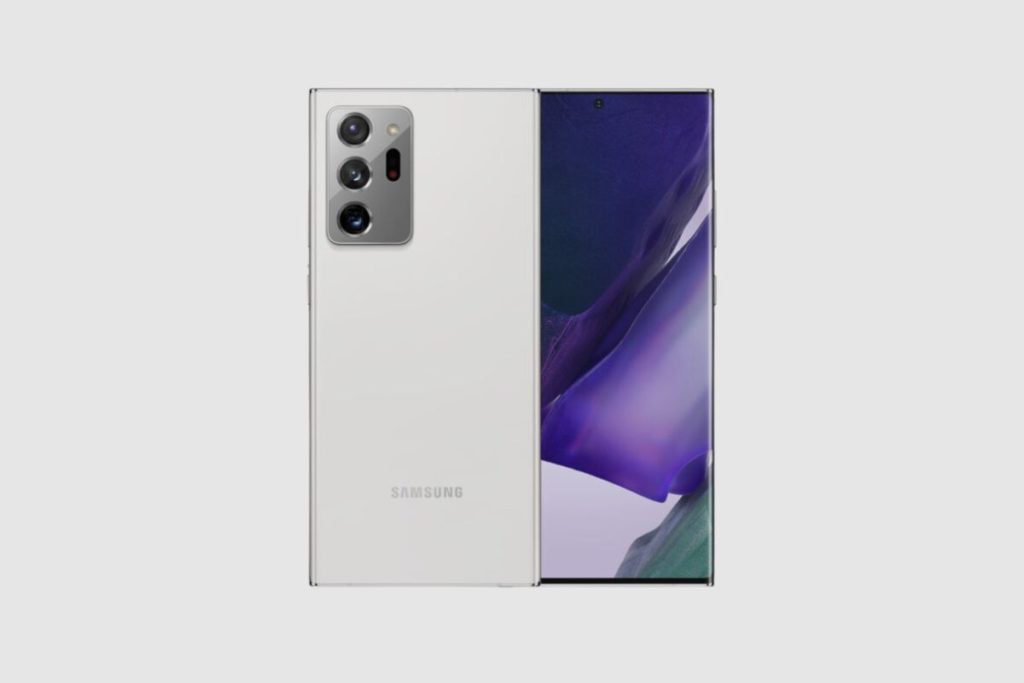
15. Samsung Galaxy Note 20 Ultra
The Galaxy Note 20 Ultra was launched in August 2020 and built with a 6.9″ Dynamic AMOLED display, a refresh rate of 120Hz, a 496 PPI, and a screen resolution of 1440 x 3088px. It features an Android 10 OS (upgradable to 13) and runs on a Qualcomm SM8250 Snapdragon 865 5G+ (7 nm+) and a Mali-G77 MP11 GPU.
Camera Specs
The Galaxy Note 20 Ultra comes with a triple camera setup.
- 108MP wide (f/1.8, 26 mm, 1/1.33″ PDAF) camera
- 12MP periscope telephoto (f/3.0, 120 mm, PDAF, 5x optical zoom) camera
- 12MP ultrawide (f/2.2, 13 mm, 120°, 1/2.55″) camera
- Features: LED flash, Auto-HDR, and panorama
- Video quality (main camera): 8k@24fps, 4k@30/60fps, 1080p@30/60/240fps, 720p@960fps
- Selfie Camera: Single 10MP wide (f/2.2, 26 mm, 1/3.2″, dual pixel PDAF) camera, which features dual video call and Auto-HDR.
- Video quality (selfie camera): 4k@30/60fps, 1080p@30fps.
Pros
- Water-resistant for up to 30 minutes at a depth of 1.5 m
- IP58 dust resistant
- Expandable external memory
- Supports S Pen
- Solid cameras.
Cons
- Massive camera bump
- Quite expensive
- Inconsistent heat management
- Quite big for the hand.
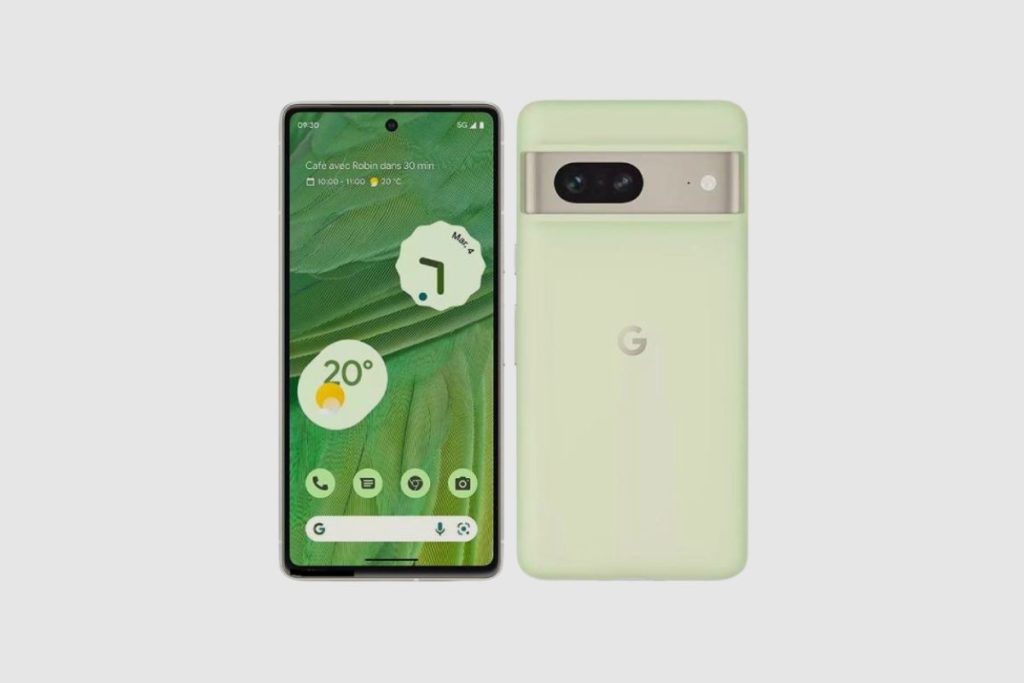
16. Google Pixel 7
The Google Pixel 7 was launched in October 2022 with the latest Android 13, which runs on a Google Tensor G2 (5 nm) chipset and a Mali-G710 MP7 GPU for smooth operations. It also boasts a 6.3″ AMOLED display, 90Hz refresh rate, peak brightness of 1400 nits, a 1080 x 2400px screen resolution, a 20:9 aspect ratio, and a 416 PPI.
Camera Specs
The Google Pixel 7 comes with a dual camera setup.
- 50MP wide (f/1.9, 25 mm, 1/1.31″, multidirectional PDAF) camera
- 12MP ultrawide (f/2.2, 114°, 1/2.9″) camera
- Features: Dual-LED flash, Pixel Shift, Auto-HDR, and panorama
- Video quality (main camera): 4k@30/60fps, 1080p@30/60/120/240fps
- Selfie Camera: Single 10.8MP ultrawide (f/2.2, 21 mm, 1/3.1″) camera which features an Android, and panorama
- Video quality (selfie camera): 4k@30/60fps, 1080p@30/60fps.
Pros
- Sturdy design
- Great cameras
- It supports wireless charging
- Smooth display
- Android 13 experience.
Cons
- Not the fastest in its range
- 90Hz limited refresh rate
- Gets hot while charging or in heavy use
- No telephoto camera.
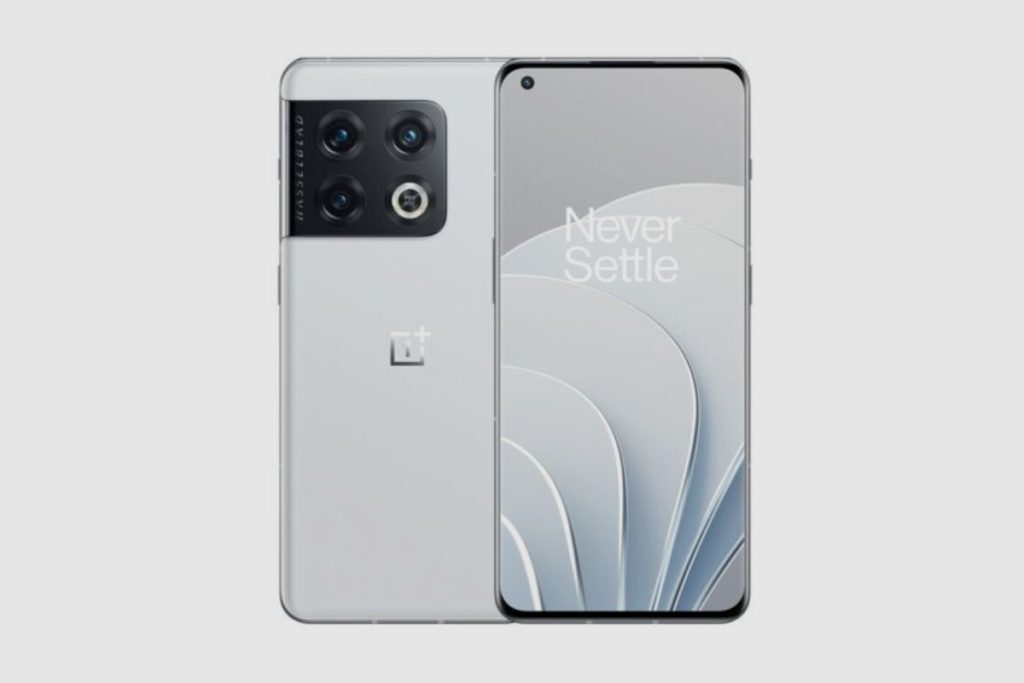
17. OnePlus 10T
The OnePlus 10T was launched in August 2022 with the Android 12 OS, which runs on a Qualcomm SM8475 Snapdragon 8+ Gen 1 (4 nm) chipset and an Adreno 730 GPU. It packs up a 6.7″ Fluid AMOLED display, 120Hz refresh rate, 20:9 aspect ratio, a 394 PPI, and a screen resolution of 1080 x 2412px.
Camera Specs
The OnePlus 10T comes built with a triple camera setup.
- 50MP wide (f/1.8, 25 mm, 1/1.56″, PDAF) camera
- 8MP ultrawide (f/2.2, 120°, 1/4″) camera
- 2MP macro (f/2.4) camera
- Features: Dual-LED flash, HDR, and panorama
- Video quality (main camera): 4k@30/60fps, 1080p@30/60/240fps
- Selfie Camera: 16MP wide (f/2.4, 24 mm, 1/3″) camera which features a HDR
- Video quality (selfie camera): 1080p@30fps.
Pros
- 150W superfast charging (fastest of any US phone)
- Great display
- Great performance
- Better heat management.
Cons
- Doesn’t support wireless charging
- Plastic chassis
- No alert slider
- Just water-resistant, not necessarily waterproof.
Conclusion
In conclusion, you can definitely count on the camera qualities of the Android smartphones mentioned above to capture memories and moments that matter to you. Of all the options, the Google Pixel 7 Pro stands out with its exceptional camera capabilities. It’s not just about the specs but the way the camera seamlessly integrates with the phone to bring you stunning photos every time.
But don’t just take my word for it; try it out for yourself and see the difference. Which of these phones do you think would be your top pick? Let me know in the comments section below. I’d love to hear your thoughts and experiences!
Image Gallery – Discover The Top 17 Android Phones With The Best Camera.















